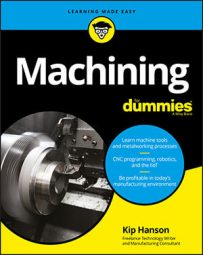The Society of Manufacturing Engineers (SME) says the average manufacturing worker in the United States earns more than $77,000 annually, but fewer than 40 percent of the parents of school-aged children consider manufacturing a good paying profession. And the National Association of Manufacturers (NAM) says that 3.5 million manufacturing jobs will be needed over the next decade, but 2 million will go unfilled due to a shortage of workers. Still think that Bachelor of Fine Arts degree you've been pursuing is a good idea?
For those of you who'd rather avoid the trials of learning on the job, there are plenty of training options available. Aside from the vocational-technical schools already mentioned (most of which offer excellent one- to two-year programs), a number of online classes exist:- The Society of Manufacturing Engineers offers its Tooling-U SME series of training materials. These include instructor-led and self-paced classes, on-demand e-books and videos, and industry-recognized certifications to demonstrate achievement.
- The National Institute for Metalworking Skills (NIMS) works with high schools, vocational technical centers, community colleges, machine tool builders, and others to develop accreditations, define standards and credentials against which students are measured, and assist with apprenticeships.
- Machine tool builder Haas Automation's HTEC Network (Haas Technical Education Center) partners with schools and educators, supplying them with equipment, software, and supplies. And the Gene Haas Foundation donates millions in scholarships and grants to a variety of industry educational programs.
- One beneficiary of the Gene Haas Foundation (as well as other industry partners) is Workshops for Warriors, a non-profit school based in San Diego. WFW offers 16-week machining and welding courses to transitioning service members. It's goal? "Rebuilding American manufacturing one veteran at a time."
You might be the top dog at your shop, but remember this: There's always more to learn (and other dogs nipping at your heels). Manufacturing is a deep, ever-changing topic, and no one masters all of it, ever. If you're not taking online classes, attending seminars, or at least reading books and trade publications, you're falling behind. And saying your company doesn't pay for it is no excuse. For starters, you're unlikely to get a job working for someone that will pay for it if you're going to sit on your hands complaining. Second, there's plenty of free or almost free information out there — subscribe to magazines, buy a For Dummies book, or take some night classes on your own dime. Just get learning. You won't regret it.

